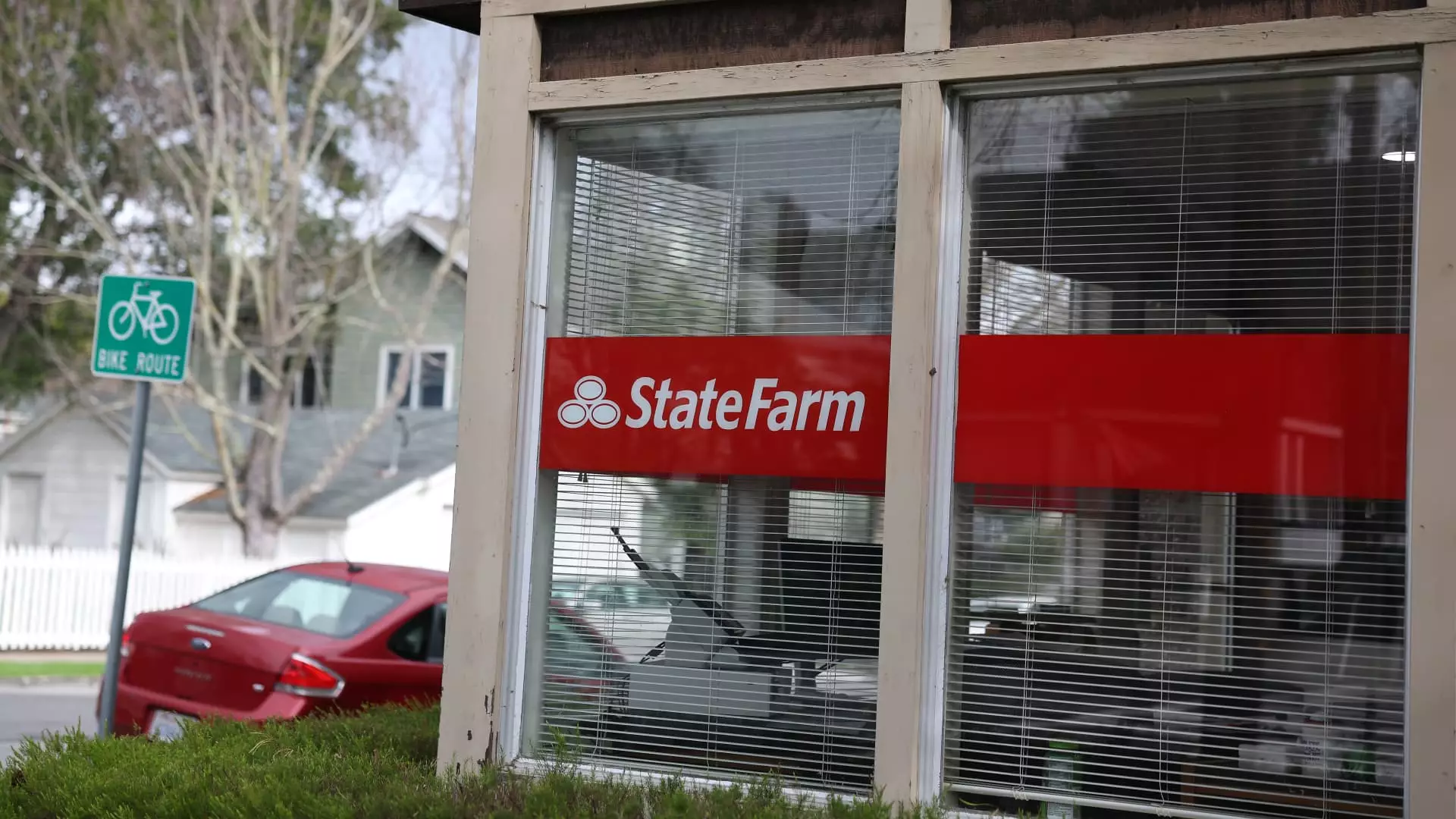In an escalation of the ongoing insurance crisis gripping California, State Farm is advocating for substantial rate hikes that could affect millions of homeowners. This week, the insurer’s state arm, State Farm General, is engaged in a crucial hearing to secure emergency rate increases, a plea driven by dire financial realities and historical calamities, notably the recent devastating wildfires in Los Angeles. The stakes could not be higher, and the implications of this request extend far beyond the insurer itself; they echo through the homes and livelihoods of nearly three million residents.
Underlying the insurer’s application is a terrifying financial scenario. With damages from the January wildfires estimated at a mind-boggling $250 to $275 billion, as reported by AccuWeather, State Farm finds itself at a critical juncture. While it currently holds about 20% of California’s homeowners market, the pressure of payouts—exceeding $2.75 billion across nearly 12,400 claims—has created a cataclysmic environment where operational viability is in question. The urgency of their situation has prompted State Farm to request a staggering 17% increase in homeowner rates, down from an initial 22%, along with a proposed 38% hike on rental dwelling policies.
Comparisons to the Titanic: Warning Signs Ignored
Addressing the hearing, attorney Nikki McKennedy of the California Department of Insurance drew an alarming analogy, likening State Farm’s predicament to the Titanic facing an iceberg. “If we don’t turn this ship around, three million Californians are going into the water without sufficient lifeboats,” she cautioned. This metaphor encapsulates the dire implications of allowing State Farm to reshape rates without stringent oversight. It highlights a troubling pattern: insurers are increasingly avoiding high-risk regions, leaving inhabitants stranded without options.
The precarious state of the insurance market is not solely the fault of catastrophic events. Over the last decade, California has seen a significant uptick in severe weather patterns and wildfires. Yet, even before the recent disasters, the insurance landscape was marred by losses due to inadequate premium collections versus high claims payouts, pushing insurers like State Farm into a corner. This disconnect lays bare the systemic ineptitudes in the market—an issue exacerbated by the election dynamics surrounding Insurance Commissioner Ricardo Lara, known for his reluctance to approve significant rate increases that could strangle consumers.
The Unjust Cycle of Insurance Pricing
While State Farm’s plea for increased premiums may appear justifiable given the circumstances, a deeper examination reveals an unsettling reality. The insurer’s losses could compel it to issue emergency requests, yet this may be less about restoring stability and more about institutional preservation. As part of its strategy, the company has indicated a concerning shift: eliminating new homeowner policies entirely and significantly reducing renewals. This defensive posture betrays an underlying lack of confidence in operating sustainably in the current climate. The prolonged push and pull surrounding rates marks an unsettling trend — one where consumers become collateral damage in an insurance system bogged down by fear, inadequacy, and market volatility.
Consumer advocacy groups have raised alarms about these proposed hikes, underscoring a critical viewpoint: the financial burden should not fall disproportionately on homeowners who are already facing the fallout from natural disasters. William Pletcher from Consumer Watchdog noted discrepancies in State Farm’s requests, advocating for transparency and fairness. “Their proposal isn’t even consistent. First, they wanted 22%. Now they want 17%. It still needs justification,” Pletcher stated, summing up a growing sentiment among consumers demanding accountability.
A Call for Sustainable Insurance Strategies
The current events have set a stage for a broader conversation on how California may rectify its insurance crisis. The state’s “Sustainable Insurance Strategy” aims to incorporate scientific disaster modeling and reinsurance costs into rate calculations—steps that could mitigate current deficiencies and promote a healthier market landscape. As economist David Appel noted during the hearing, financial stability for insurers is vital, but it must be approached holistically, steering clear of reactive measures that harm consumers in the process.
With State Farm and its peers on the brink of a potential financial reckoning, residents must demand that all stakeholders—from regulators to insurers—take a more consumer-centric approach. Navigating the nuances of insurance in a volatile climate requires bold, well-informed decisions that prioritize long-term viability over immediate financial gain. The time for proactive regulation and responsible business practices is now. In a society built upon collective well-being, we must protect our communities from predatory practices masquerading as emergency measures.

